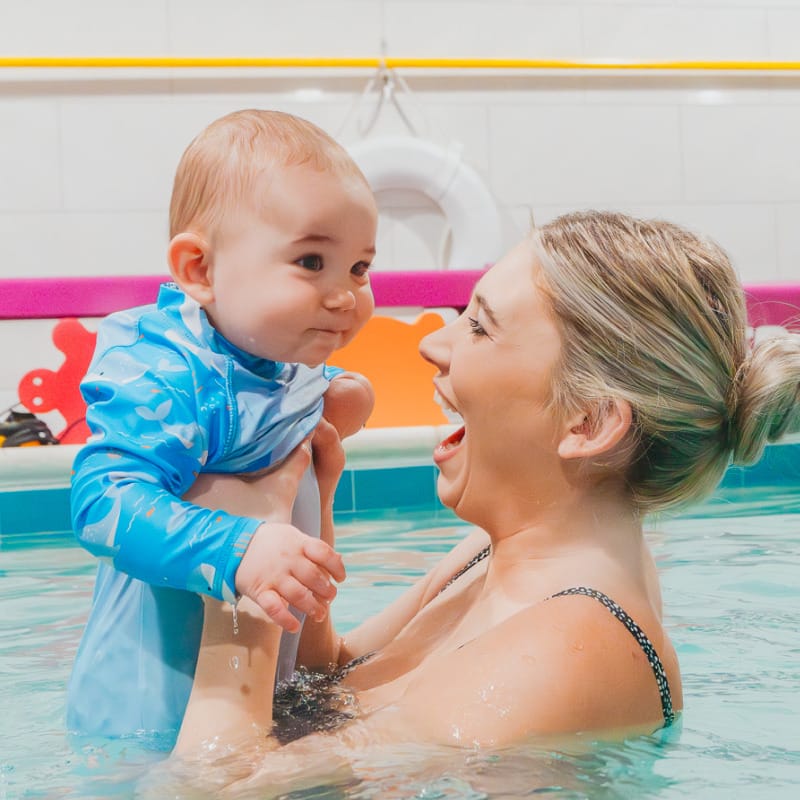Baby Safety Tips: Essential Water Safety Around the Home
Oct 22, 2024
Water safety is a critical concern for parents, especially infants and young children. Drowning is the leading cause of accidental death in children under the age of four, and most incidents happen at home. Here are some essential water safety tips to help keep your little ones safer. Implementing these tips can create a safer environment and reduce the risk of water-related accidents.
1. Never Leave Your Baby Unattended Near Water
Whether it’s a bathtub, kiddie pool, or bucket, never leave your baby alone near water, even for a moment. Babies can drown in as little as one inch of water, and it can happen silently and quickly. Always keep a hand on your baby during bath time and drain water immediately after use. If you need to step away, take your child with you.
2. Install Barriers and Safety Gates
Create barriers to prevent your child from accessing water hazards in your home. Use safety gates to block access where necessary, and always keep toilet lids closed and locked with childproof latches. Always ensure pools are surrounded by a four-sided fence at least four feet high with a self-closing, self-latching gate.
3. Empty and Store Water Containers Upside Down
Buckets, bathtubs, and other water-filled containers pose a significant risk. After use, empty all containers and store them upside down to prevent rainwater or other liquids from collecting. This simple step can prevent accidental drownings, especially in curious toddlers who love to explore their surroundings.
4. Keep Toilets Locked and Secure
Toilet seats can be a hidden water hazard for small children. Install toilet locks to keep the lids closed and prevent children from accessing the water. This is a simple yet effective way to avoid accidents, especially as your child starts to explore your home more independently.
5. Supervise Bath Time and Use Anti-Slip Mats
Bath time should always be a fully supervised activity. Have everything you need, such as towels and soap, within arm’s reach before starting. Place an anti-slip mat inside the tub to prevent slips and falls, and ensure the water temperature is safe by testing it with your elbow or a bath thermometer—keeping it between 37-38°C (98-100°F) is ideal.
6. Use Life Jackets and Floatation Devices Correctly
When around open water like lakes, rivers, or even larger backyard pools, ensure your baby wears a properly fitted U.S. Coast Guard-approved life jacket. Remember that floatation devices like water wings, puddle jumpers, or pool noodles are not substitutes for a life jacket and do not provide sufficient safety for infants and toddlers.
7. Teach Basic Water Safety Skills Early
While the youngest babies won’t learn to swim right away, early water exposure and swim lessons can help them develop basic water safety skills. Parent-and-child swim classes focus on water acclimation, floating, and learning to turn to the wall. These skills can significantly improve a child’s safety and comfort in the water.
8. Be Aware of Hidden Water Hazards Around the Home
Be vigilant about other potential water hazards around the home, such as fish tanks, ice chests, or large plant pots. Keep these out of reach or secured with lids. Additionally, be mindful of rainwater that may collect in outdoor items like wheelbarrows, sandboxes, or outdoor toys.
9. Learn Infant CPR and Basic First Aid
Knowing how to perform CPR on infants and young children is a crucial skill every parent should learn. In the event of an emergency, immediate action can be lifesaving. Many local organizations, such as the Red Cross, offer CPR and first aid courses for parents and caregivers.
10. Always Be Within Arm’s Reach in Water
The best way to keep your baby safe around water is to always be within arm’s reach. Whether at home, at the beach, or by the pool, stay close enough to touch and assist your child at all times. Designate a “Water Watcher” during gatherings to ensure that one responsible adult is always responsible for keeping an eye on the children in or near the water.
Important Facts About Water Safety at Home
-
Drowning Can Happen in Seconds: Drowning is quick and silent, often occurring without splashing or calling for help. It’s crucial to stay vigilant around any water source, no matter how shallow.
-
Most Home Drownings Occur in Bathtubs: According to the American Academy of Pediatrics, bathtubs are the most common site of infant drownings. Never leave your child unattended during bath time.
- Pool Fencing Reduces Drowning Risk by 83%: Installing a four-sided isolation fence around pools is one of the most effective ways to prevent accidental drownings.
Creating a safe home environment is the first step in protecting your baby from water-related accidents. Following these safety tips and staying informed about potential hazards can significantly reduce the risk of drowning and keep your little ones safe.
Looking to build your child’s confidence and skills in the water? Explore Emler Swim School’s programs designed for infants and young children. Enroll today and give your child the gift of water safety!





